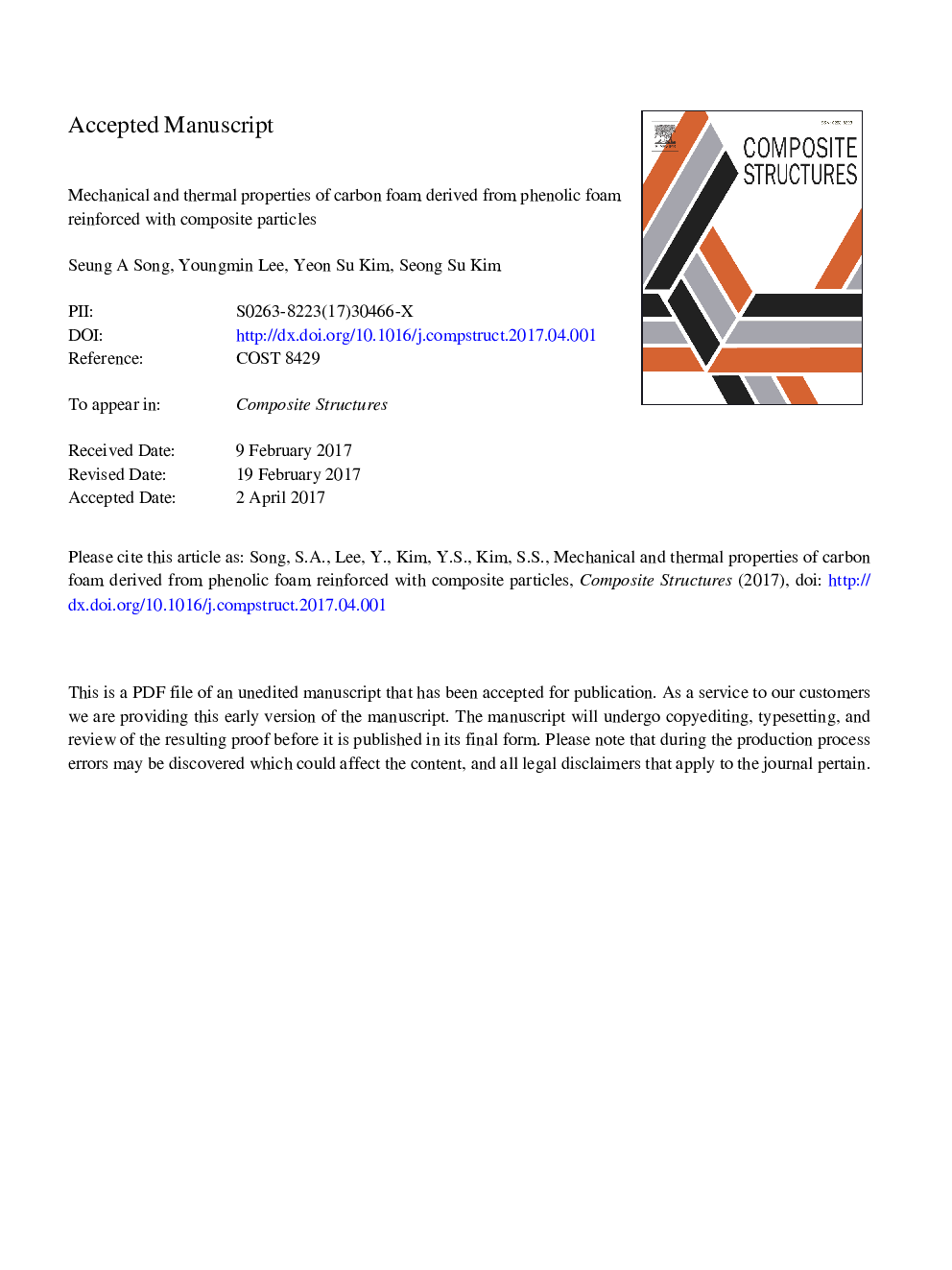| Article ID | Journal | Published Year | Pages | File Type |
|---|---|---|---|---|
| 4911951 | Composite Structures | 2017 | 25 Pages |
Abstract
Carbon foams are fabricated by carbonization of polymer foams derived from phenolic resin. Phenolic resins are a good source of carbon or carbon composite materials due to their low level of toxic gas emission during pyrolysis and high heat resistance. However, carbon foams based on phenolic foams have inferior mechanical strength because of glassy carbon formed during the carbonization procedure. The reinforcement of phenolic foams with nano-particles improves the mechanical strength of the carbon foam due to high cell density and cell uniformity. However, aggregation of the nano-particles in the carbon foam can cause poor interfacial bonds and degrade the mechanical properties. Here, composite particles of exposed multi-walled carbon nanotubes in polyimide were used to improve the dispersion of the particles and increase the carbonization yield. In addition, the cell density and uniformity of the phenolic foam were clearly improved by the uniform dispersion of such composite particles in the phenolic resin. The carbon foams were fabricated via carbonization of the phenolic precursor foams at 1000Â ËC in a nitrogen atmosphere. The cell morphology was characterized by scanning electron microscopy and the foam density and cell density were measured. Mechanical and thermal properties of the foams fabricated under different conditions were characterized by compressive tests and the transient plane source method, respectively.
Related Topics
Physical Sciences and Engineering
Engineering
Civil and Structural Engineering
Authors
Seung A Song, Youngmin Lee, Yeon Su Kim, Seong Su Kim,
